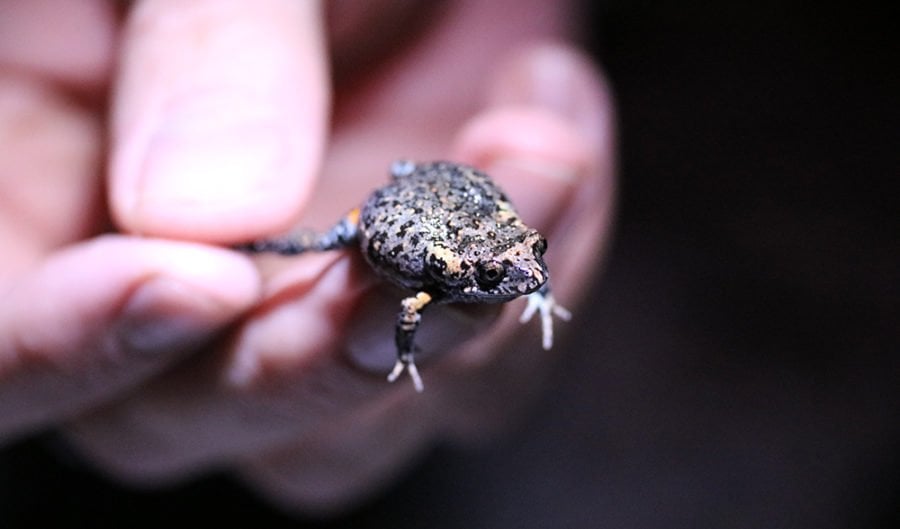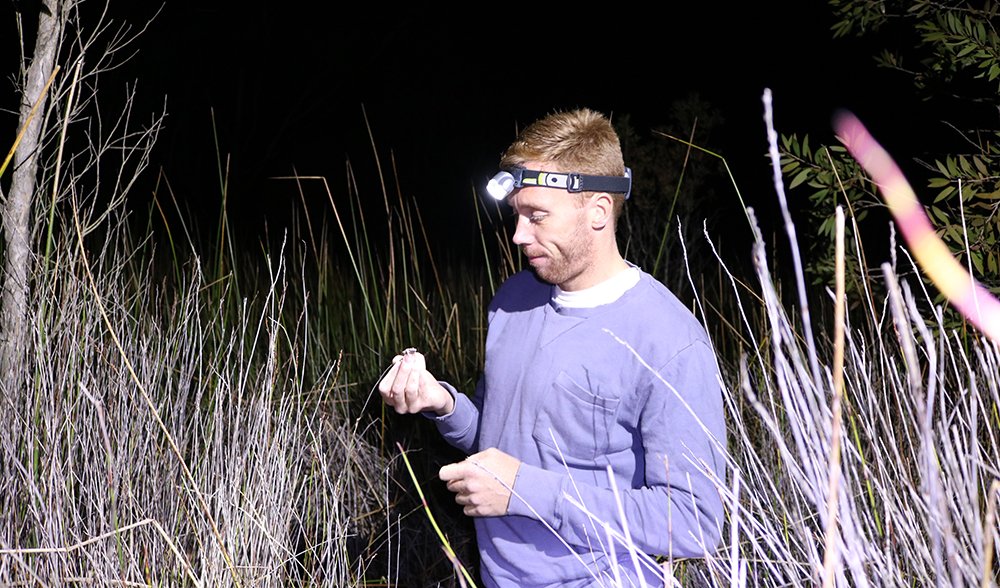New frog species found in Newcastle

A NEWCASTLE BIOLOGIST has made a remarkable discovery – a species of frog previously unknown to science, found in Port Stephens, just 10km from Newcastle Airport.
Dr Simon Clulow, a biologist at the University of Newcastle, said it was the frog’s unique marbled black and white underbelly that led him to realise he had found something special.
“The distinctive marble pattern on the frog’s belly, along with other features makes it quite different to any other frog species in this part of the world and led us to believe straight away that we had found a new species – it was an incredible moment,” said Simon, who first spotted the new frog at a sand swamp at Oyster Cove.
Discoveries of new vertebrate species are rare, but particularly so within developed areas like Newcastle, which is the second most populated area in NSW after Sydney.

The new species was discovered by University of Newcastle biologist and frog expert, Dr Simon Clulow, pictured. (Image: Sheena Martin)
The find is also of significance given most new species ‘discoveries’ these days are based on differences in genetics uncovered in the lab, Simon explained. “It’s almost unheard of to pick up a vertebrate in the field and know instantly, based on appearance alone, that it is a new species,” he said.
The new frog is tiny – it fits on a human fingertip – and it is effectively camouflaged, living well concealed under a layer of vegetation or sand, which likely contributed to it managing to evade discovery for so long.
The new species has been named Mahony’s Toadlet (Uperoleia mahonyi) after Simon’s supervisor and mentor, Professor Michael Mahony, who is a renowned frog expert and conservationist.
Despite the name, Mahony’s toadlet is not to be confused with a toad. It is a native Australian frog species named for the glands on its back, which resemble the toads or Europe and America.
The new species is thought to have a highly restrictive distribution, occurring in select coastal sand swamps in the Myall Lakes, Port Stephens and Central Coast.
“The frog is a habitat specialist, living exclusively on a particular type of leached white sand substrate, which could make it more at risk from threats such as habitat loss and sand mining,” said Simon.
Find out more about the discovery and see the new species in action in this video from the University of Newcastle:

